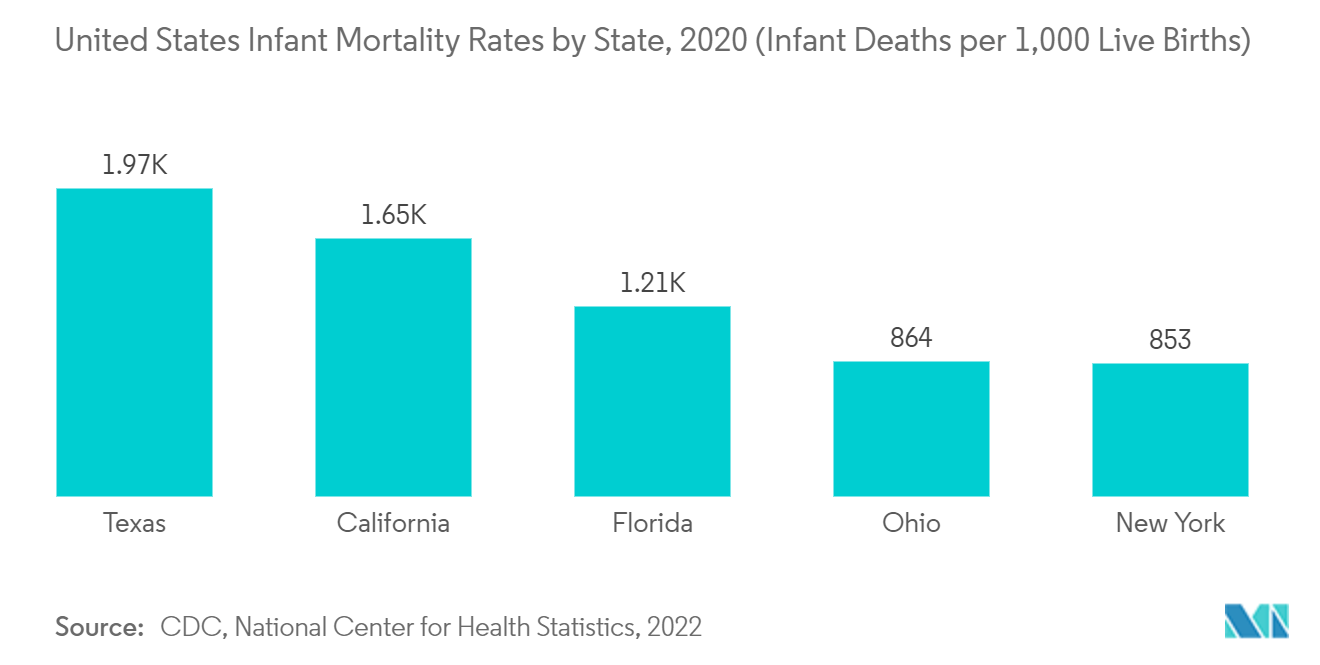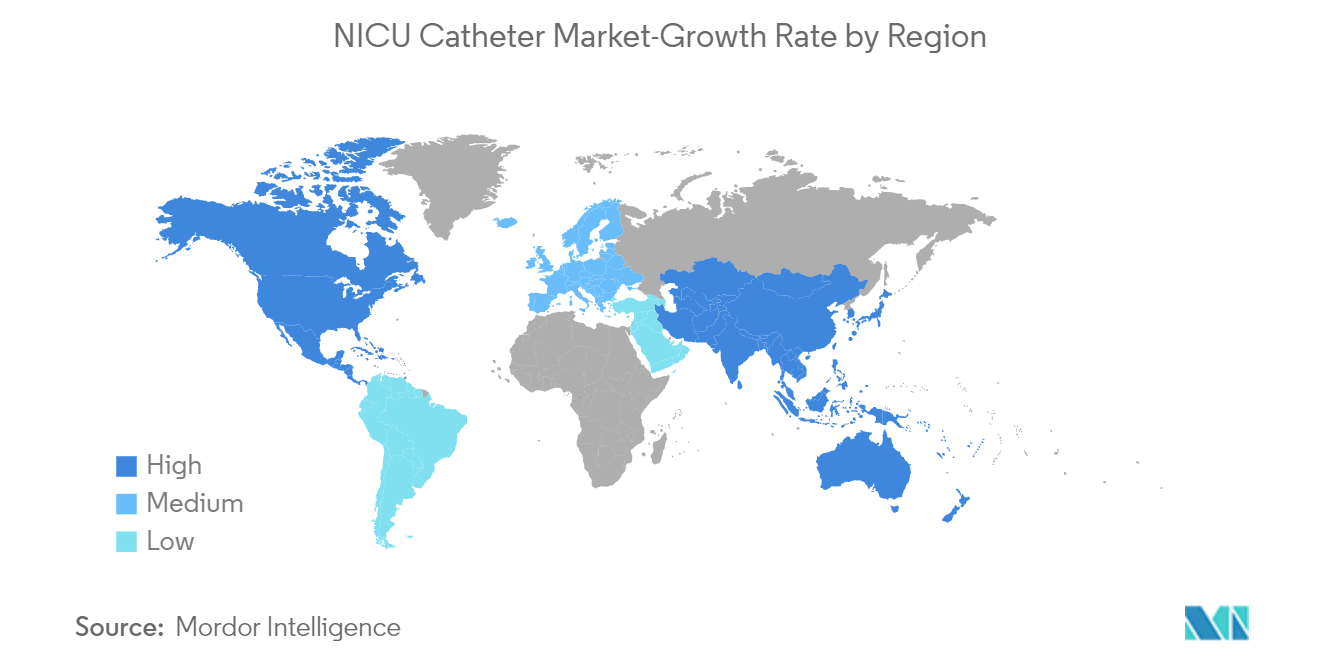Market Trends of Global NICU Catheter Industry
This section covers the major market trends shaping the NICU Catheter Market according to our research experts:
The Peripherally Inserted Central Catheters (PICCs) segment is Expected to Hold a Significant Market Share in the NICU Catheter Market
Peripherally inserted central catheters (PICCs) are long, thin tubes useful for newborn vein access for the administration of fluids and medications. These are extensively used in neonates to provide nutritional support for critically ill or very low birth weight newborns.
The requirement for PICCs is anticipated to rise due to escalating preterm births. According to the Central Disease and Prevention (CDC) updates from November 2021, one in ten babies are born preterm globally, and this rate has been increasing. The statisticians observed that the preterm birth rate is higher in developing countries. According to the World Health Organization (WHO), China has a preterm birth rate of 6.9%, the second-highest number of preterm births at 1.16 million per year in the world. Moreover, in Brazil, around 340,000 babies are born each year prematurely, that's double the preterm rate in Europe. Thus, in recent years, there has been a great evolution of awareness regarding the management of PICC in the neonatal population.
Hence, the rise in preterm births will require neonatal care, for which PICCs are a vital instrument. So, the market for PICCs is expected to grow in the coming future.

Asia-Pacific is Projected to Have a Prominent Growth Rate
Asia-Pacific is expected to grow exponentially in the forecast period, owing to the high preterm birth rate. According to the Organisation for Economic Cooperation and Development (OECD), in 2022, preterm birth rates registered higher in South Asia ranging from 3.2% in Ghana to 15.7% in Pakistan and contributing to 49% of all neonatal deaths in the region. Additionally, India, China, Bangladesh, Indonesia, and Pakistan reported a large number of preterm births that accounted for over 40% of preterm births globally.
Moreover, the rising mortality rate of mothers fuels the growth of the NICU catheter market, attributable to the poverty and weak health systems in the countries. According to the United Nations Population Fund (UNFPA), tens of thousands of women across Asia-Pacific die unnecessarily every year due to bad quality of obstetric, antenatal, and perinatal care. This leads to the exceptionally high average maternal mortality rate in Asia-Pacific, which is 127 per 100,000 live births, compared to the average of developed-country just 12 per 100,000.
So, the Government is taking initiatives to improve maternal and newborn health. For instance, the Government of India has envisioned increasing health spending from the existing 1.15% to 2.5% of GDP by 2025. Further, in June 2021, the Chinese government handed over medical supplies to the Ministry of Health procured by UNICEF to improve newborn babies' health.
Therefore, due to the aforementioned factors, the NICU catheter market is expected to witness significant growth over the forecast period.


